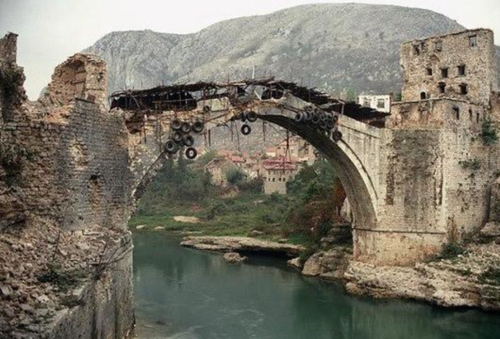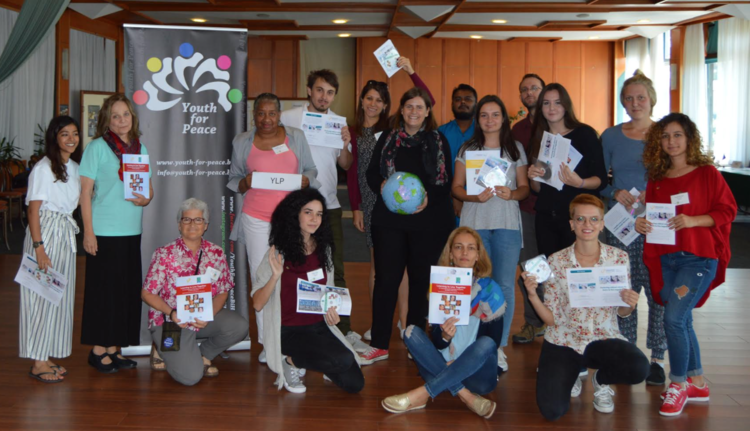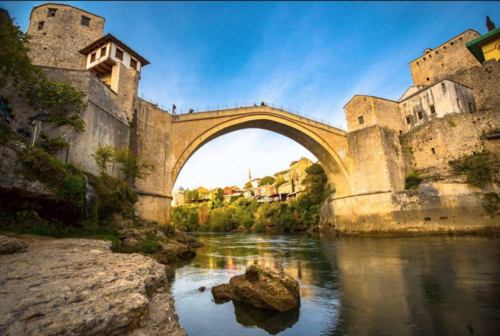Crossing Bridges, Building Peace
A peace story from Bosnia-Herzegovina
-LEJLA HASANDEDIC-DAPO-
Lejla was three when the war began in Bosnia and Herzegovina. She lost her grandmother, neighbors, and friends. Food was scarce, electricity and running water were limited. Grenades were a daily reality. “We were starving. I saw killing every day. When you are being bombed and losing family members, you start hating,” Lejla explains.
The war ended in 1995. The bombs and killing stopped, but the hate and division did not. When life resumed and the schools reopened, Lejla’s family and teachers continued to affirm this divided narrative blaming the “others” for the tragedy experienced. In an effort to help heal and unite, representatives from the European Union and OSCE decided to support re-opening of a school bringing Croats and Bosniaks together under one roof. Great idea, but the effort fell a bit short. The students were still divided by floors; classes were separate; even their entrances were on different ends of the building. Lejla found herself wanting to know “the other.” “In my teenage years I was very curious to meet the ‘others.’ I still didn’t know half of the city. What are they like?”
The students decided to lead a student council to bring the two sides together. Lejla attended the first meeting with a strong current of negative energy and anxiety. “I’m going to fight and ask why they took my childhood, my loved ones. When they started speaking, I saw how similar we were. I forgot about my negative energy. I couldn’t wait to know them better and felt this was just the beginning.”
The student group continued to meet, bridging divides and building relationships. In an effort to create a symbolic experience, the group decided to cross Mostar’s Old Bridge together. The Old Bridge had been destroyed in the war and had since been rebuilt. Crossing the bridge together symbolized “that we were creating bridges and taking down barriers.” Lejla will never forget the experience of silently walking across the bridge arm-in-arm. “Afterwards we sat at the coffee shop in silence for 30 minutes taking in all the emotions and impact.”
“At that moment, I thought this is what I wanted to do.
Cross bridges. Build peace.”
“In that coffee shop, my friend shared what his father, a commander, had done in the war - bombing, killing, destruction. I learned that it was most likely his father who was responsible for my grandmother’s death through a bombing he’d ordered in my grandmother’s neighborhood. What do I do now? I said to my new friend, I need to forgive you... you did not do this. We need a path forward. Can we shake hands now here and start peace-building activities in this city? I asked my friend to walk forward with me...from this day forward. He said yes. This was the turning point in my life.”
“That day we crossed the bridge, shook hands, and promised each other that we would start peace-building together.”
“We would not let our future children be raised in an environment of hate and discrimination.” Lejla committed to the work of peace-building and has never looked back. In her professional life, she is a psychologist and psychotherapist, focusing on transgenerational transmission of trauma. In her role as a grassroots activist, Lejla started an organization called Youth for Peace. Lejla sees that the current generation of young people are carrying forward the negative narratives shared by their parents and grandparents who suffered through the war. She and a team of 40-50 volunteers offer transformative workshops that encourage young people to come together, uproot their borrowed discriminations and hateful prejudices, and find meaningful relationships.
“It’s hard to fight with someone who is a close friend. It’s hard for me to fight you if I have a personal connection with you.”
Lejla believes that providing peace-building workshops to young people is the best way to ensure a future without war for her own son - the future she and her friend promised each other at the cafe at the end of the Old Bridge in Mostar. “I believe the youth should be the focus - they are the future leaders, future parents. If they understand the value of this work, they will help move it forward. Bringing young people together will help them be the change in their communities.”
(For more information about Youth for Peace, please visit the Youth for Peace web site.)





